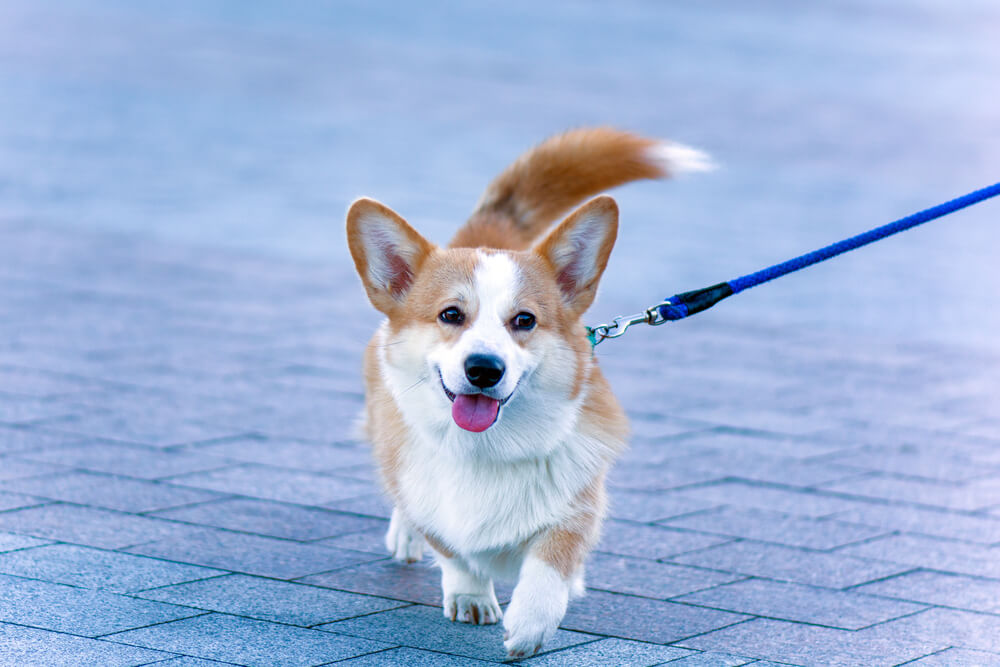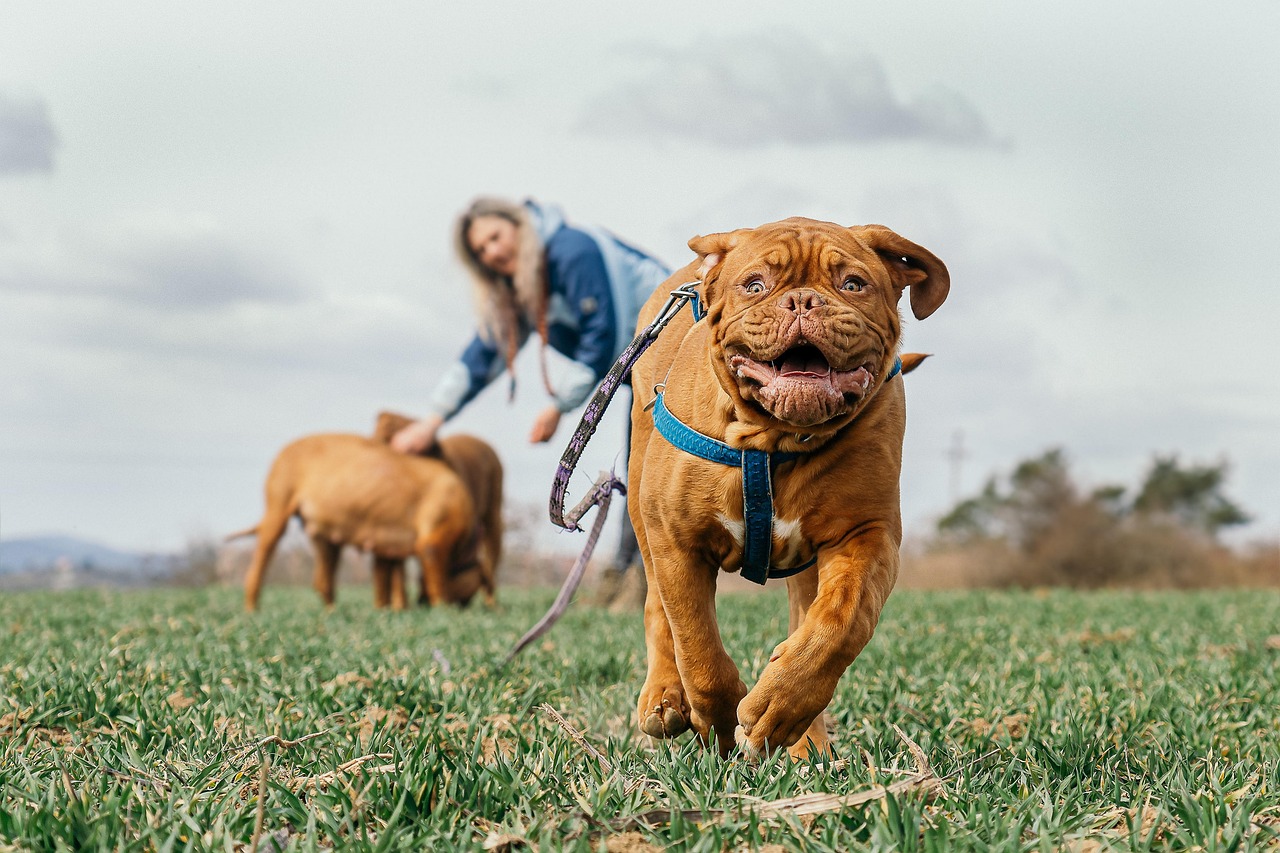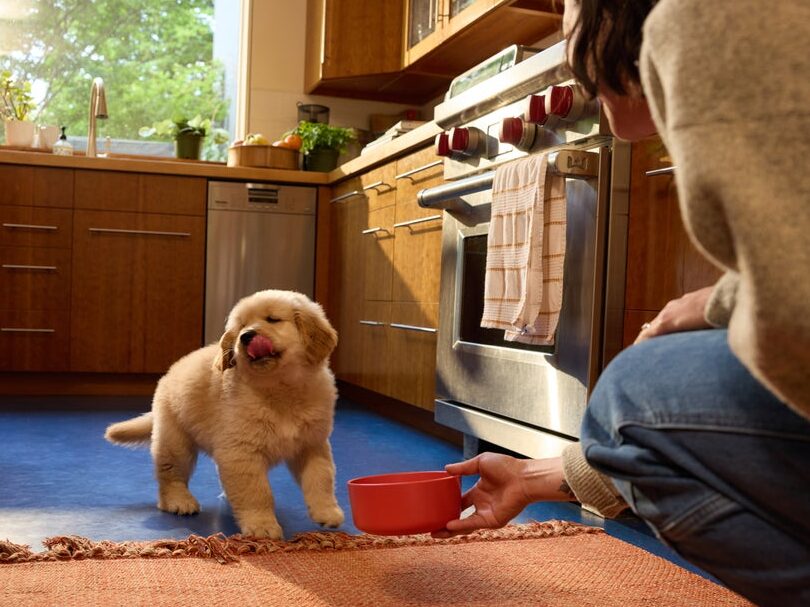Hey Ollie blog readers! We’re offering you an exclusive 60% OFF your starter box! Try now!
You’ve just welcomed a puppy into your home! You’re overwhelmed with figuring out food, finding a vet and thinking about training. There’s a lot to consider – and one of the most important things you’ll need to do is teach your new pup how to safely walk on a leash. This will help you to begin socializing your pup and helping them explore the world (even if it’s just your backyard or around the block at first). Here are 7 actionable tips for how to leash train a puppy the right way.
Before you get started with leash training a puppy, set yourself up for success. Get your puppy leashed up, and make sure you have plenty of treats and/or a favorite toy handy.
Step 1: Introduce the Leash and Collar
Goal: Help your dog feel comfortable with wearing a collar and leash.
- Choose a well-fitting collar and lightweight leash for starters.
- Let your dog sniff the leash and collar to familiarize themselves.
- Put the collar on for short periods while distracting your dog with play or treats.
- Attach the leash and let your dog drag it around (supervised) to get used to the feeling.
Step 2: Practice Indoors
Goal: Teach your dog to stay calm while on the leash.
- Begin practicing in a distraction-free indoor space.
- Hold the leash and encourage your dog to follow you using treats or a favorite toy.
- Use a verbal cue like “let’s go” to initiate walking.
- Reward your dog when they walk calmly beside you.
- Ignore any leash biting or behaviors you don’t want.
Learn More About How to Potty Train a Puppy
Step 3: Master Loose Leash Walking in the Yard
Goal: Transition leash training to an outdoor setting.
- Start in your yard or another quiet outdoor area.
- Practice walking a few steps at a time, rewarding calm behavior.
- If your dog pulls, stop and wait until the leash is slack before moving forward again.
Step 4: Introduce Distractions
Goal: Teach your dog to focus in stimulating environments.
- Gradually increase distractions by walking near other people, dogs, or cars.
- Keep treats on hand to reward your dog for staying calm.
- Use commands like “sit” or “watch me” to redirect their focus when needed.
Step 5: Increase Walk Durations and Complexity
Goal: Build your dog’s endurance and confidence on the leash.
- Gradually increase the duration and distance of your walks.
- Practice leash walking on different terrains like grass, pavement, and trails.
- Introduce advanced commands like “heel” to refine their walking skills.
Step 6: Troubleshoot Common Problems
Goal: Address pulling, lunging, or stopping behavior.
- For pulling: Stop walking and only move forward when the leash is slack.
- For lunging: Use a firm “leave it” command and redirect their attention with a treat or toy.
- For stopping: Encourage forward movement with an upbeat voice or gentle tug, then reward them.
Guide for Why Your Dog Refuses to Walk
Advanced Leash Training Tips
Add the “Sit” Command When You Stop Walking
Teaching your puppy to sit when you stop is especially helpful in cities or busy areas. Use the sit command every time you stop, rewarding your pup generously when they sit. With practice, your puppy will automatically sit without the command, making waits at traffic lights or chatting with neighbors much
Teach your puppy to walk on a loose leash
Loose leash walking means your dog is walking next to you, under your control. They are not behind you, or in front of you pulling. This skill is a requirement for the American Kennel Club Canine Good Citizen (CGC) exam. The CGC is sometimes required by landlords or insurance companies, and is the first step in becoming a Therapy Dog. Even if your pup is not interested in earning a title, walking on a loose leash is a great skill to have!
Exercising Your Dog: Tips and Recommendations
Use Release Commands
Dogs need time to sniff, greet others, and explore. Teach release commands like “go sniff” or “go say hello” to signal when it’s okay to move freely. Also, work on polite greetings to ensure your dog interacts calmly with people and other dogs. You’ll want to also make sure to teach your pup polite greeting skills both for people and other dogs.
Practice, practice, practice
Short, positive training sessions (5–10 minutes a few times a day) are key. If your pup gets tired or distracted, take a break and return later. Avoid training when you’re frustrated or tired—it’s more effective when you’re patient and focused. If your pup seems tired or unfocused, don’t try to train through it. Let them rest or do something else and come back to training when you’re both ready to work.
Tips to avoid pulling on the leash
To stop leash pulling, pause immediately and avoid verbal cues—this is called “acting like a tree.” Wait for your puppy to refocus on you, or use a cue like their name or a touch to get their attention. Reward them with praise, a click, or a treat when they look at you. Resume walking with a cue like “let’s go!” to reinforce calm behavior.
Once this is consistent, practice at different speeds and introduce a “right here” cue to guide your dog to your side, rewarding them with praise or a treat for following along.
First, you have to be ready to stop when your dog pulls on their leash. Simply stop walking, and don’t give them any verbal cues. Some trainers refer to this as “acting like a tree.”
How to Turn Your Dog’s Walk into a Workout
When to ask a professional for help with leash training
There will be times when your puppy isn’t listening to you or you feel like you’re getting nowhere. Try not to get frustrated with your puppy – they’re learning a lot. Not just about walking on a leash but about how the world works.
If your puppy isn’t listening during a leash training session, start by trying to redirect them to something else to get their attention back. If that doesn’t work, take a break and come back to the skill you were trying to work on. Like us, puppies can get overworked or even bored with doing the same thing over and over.
If you’re struggling with how to leash train a puppy, consider enrolling in a puppy kindergarten or obedience class. This will allow you to meet other people (and puppies) and learn from an experienced trainer. Look for trainers with the CPDT-KA credentials who use positive reinforcement and fear-free training methods.
Dog Running Away? An Expert Shares Tips for Prevention
Choosing the right collar for your puppy
To start teaching your new puppy some leash manners, you’ll want to start with the right equipment. If you aren’t sure which of these collars or harnesses is most appropriate for your pup, consult a knowledgeable dog trainer.
Flat collar
This is the most basic type of collar that you see on most dogs. The collar is flat to the dog’s neck and can be made out of nylon, polyester or leather. The buckle can be made out of plastic or metal and they’re usually adjustable to make sure you get a good fit for your pup. ID tags and proof of rabies tags can be attached to a D-ring on these collars.
Slip collar
Sometimes as an all-in-one with the leash attached, the slip collar can be easily put on and taken off your pet. Many slip collars have a rubber stopper to prevent them from overtightening. You should not leave your pet unsupervised in this style of collar as there is a choking risk.
Martingale collar
These collars have an extra “loop” and tighten when the dog pulls. They then relax when the dog stops. Martingale collars can be helpful for dogs who pull or frequently slip their flat collars. They are considered safer than choke or prong style collars. If your dog has a large neck and a small head, this might be the right collar for your dog.
Head collar
These collars loop over your dog’s muzzle and can help stop strong pullers. While they don’t teach your dog not to pull, they do reduce their pulling power. This is because dogs can’t put as much muscle into their muzzles as they can their bodies. Popular brands include the Gentle Leader and the Halti Head Collar.
Rear clip harness
These harnesses go around your dog’s body and the leash clips on their backs between their shoulder blades. Harnesses can come in handy for dogs who have skin issues or can’t wear a collar on their neck for whatever reason. When fitted properly, your dog should not be able to slip out of a harness. The downside to using a rear clip harness when walking is that they can encourage your dog to pull. This is because when your pup pulls they’ll create some pressure and their instinct will be to pull into the pressure. This is the reason why sled dogs wear this type of harness when they are pulling a sled – the opposite of the behavior you want when you’re teaching your puppy to walk on a leash.
Front clip harness
This type of harness has the leash attached in the middle of your dog’s chest. When your dog pulls in a front clip harness, their attention is redirected to you. Unlike the rear clip harness, this type of harness discourages pulling. A popular brand of front clip harness is the Easy Walk harness.
8 Smart Home Products for Dogs
Choosing the best leash
There are a few things to take into consideration when choosing a leash for your dog. The first is the length of the leash. Some cities and states have laws requiring leashes be no longer than 6 feet long.
You will want to find something that is easy to grip and feels good in your hands. Leashes come in many different widths as well. Make sure to choose something that is appropriate to your dog’s size. The larger and stronger your dog, the thicker the leash you may want.
We love these convertible leashes from Fable Pets and Bold Lead Designs.
The Ollie blog is devoted to helping pet parents lead healthier lives with their pups. If you want to learn more about our fresh, human-grade food, check out MyOllie.com.

The nutrition your dog needs,
the food they want.
Tagged As:

The nutrition your dog needs,
the food they want.

Enjoying our articles? Subscribe our Newsletters and get new articles directly to your inbox
You might also like
23 September 2025
6 MINS READ
Back to School: Training Your Dog at Any Age
As we hit back-to-school season rolls around, it’s not just kids who benefit from sharpening their skills and learning something new—our dogs can, too! Training isn’t limited to puppies or p…
by Ollie Pets
23 September 2025
7 MINS READ
Lace Up and Leash Up: A Beginner’s Guide to Running with Your Dog
Running is one of the simplest ways to stay active, and it’s even better with a canine companion. Not only does running with your dog keep you both in great shape, it also strengthens your bond …
by Ollie Pets
13 May 2025
8 MINS READ
Puppy Training Guide & Behavior Timeline
Bringing home a puppy is pure magic. It’s also pure chaos—tiny teeth, zoomies, accidents in the house, and moments that make you wonder if you’re raising a future genius or a tiny tornado. …
by Ollie Pets







